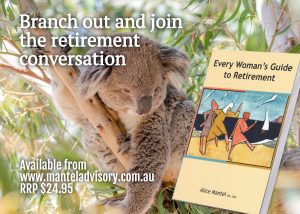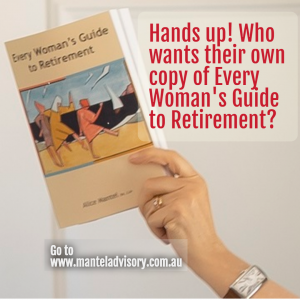
Relax while you plan your retirement

A site on retirement, life changes and planning for your future.


Although this article is written from the perspective of a new graduate, its advice is equally applicable to older people looking for work in this tough employment market.
From giving back to the community to learning new professional skills, GradConnection shares the reasons why you should volunteer – and why a good volunteer role is far more important than just a line on your resume.
As any recent graduate or anyone approaching the end of their university studies knows, the market for graduate jobs is increasingly competitive. In 2019, the ABC reported that the year prior, only 73 per cent of Australian graduates found full-time employment in their field within four months of graduation. Citing research from Universities Australia, the ABC also reported that since the 2008 global financial crisis, the period between graduation and securing long-term employment has lengthened.
Against this backdrop, many graduates are exploring the advantages of volunteering in terms of not only personal development, but helping their resumes and applications stand out. Whether you’re considering working with a small community group or larger not-for-profit organisation, studies have shown that the benefits of volunteering include an increased perception of employability among potential employers.
Here are some of the professional and personal benefits of volunteering:
Whether you’re joining a small grassroots organisation or an established charity, participating in volunteer work is a great way to sharpen your people skills. Learn how to communicate effectively with people from all walks of life, and develop greater empathy and teamwork skills that will serve you in the early years of your career and beyond.
Beyond teaching you how to empathise with people from different backgrounds, there’s also considerable evidence to suggest that volunteering is good for your health. Volunteer work can make you feel like part of a community and give you a sense of purpose and achievement, all of which can contribute to improved overall mental health. What’s more, all the communication skills you learn in a volunteer job can later be applied in full time employment.
Other key advantages of volunteer work are the flexibility and resilience it will encourage you to develop. As many charitable and community organisations have a lean staff, they often rely heavily on volunteer contributions to keep things running. In many cases, this will require you to be flexible and quickly adapt to changing deadlines and priorities.
Rather than seeing this as a challenge, think of it as valuable work experience: Even in full-time work, things don’t always go as planned, and the ability to keep a cool head and think on your feet is highly valuable.
In addition to flexibility, the benefits of volunteering extend to exposure to a range of roles. Similar to internships or clerkships that operate on a rotation basis, volunteer work can give you valuable, practical experience in a range of different positions.
For example, you might assist with marketing one day and help plan a fundraising event the next. The close, tight-knit environment of many organisations that benefit from volunteering makes them the perfect environment in which to develop new skill sets. Having a diverse range of skills can ultimately help you find a graduate job in your dream industry, and make you a valuable all-rounder addition to any team.
Arguably one of the biggest perks of volunteering is the knowledge that you’re giving back and contributing in a meaningful way to the wider community. The benefits of volunteering for the community are clear, wherever you choose to donate your time. Whether you’re working at a community legal centre, soup kitchen, or environmental organisation, volunteer work is a fantastic way to support the less fortunate and those in a difficult stage of their life.
Employers are also keenly aware of the personal benefits of volunteering for the community, and see many of the resulting traits as highly desirable. Research by SEEK Volunteer found that for many prospective employers, applicants with volunteering experience were perceived as motivated, proactive, and socially responsible – and therefore eminently more valuable.
Pro Tip: Don’t overlook the importance of volunteering
For 92 per cent of Australian employers, relevant volunteer experience gives candidates a significant competitive advantage. So what are you waiting for? Now that you know the professional and personal benefits of volunteering, it’s time to get out there and start helping your community.
Christmas can be a stressful time of year. You will blow your budget, your relatives will annoy you, and you’ll receive gifts that go straight to Vinnies, all in 40℃ heat.
Meanwhile, your friends post pictures on social media of their idyllic vacations, yearly accomplishments, and super happy toddlers and cats. You may feel extra stress from not accomplishing all the goals you set at the start of the year. You feel this stress in the face of other people’s overt jolliness.
So how can the science of gratitude help you not only cope with, but enjoy, the ups and downs of the festive season?
Gratitude, in short, is a strong feeling of appreciation towards someone who’s helped you. You can also feel gratitude when you make a habit of noticing and appreciating the positives in life. This might be feeling grateful for a cooling breeze on a hot day, appreciating your abilities in the kitchen or as a good friend.
Over the past 20 years or so, there has been quite a bit of research on gratitude.
Some of our own research shows older people are more grateful than younger people; suggests gratitude serves an evolutionary purpose by helping humans bond; and shows it’s possible to become more grateful with practice.
Practising gratitude often can have many positive impacts, including: an increased sense of well-being and life satisfaction; positive emotional functioning such as more pleasurable emotions and thoughts that life is going well; increased optimism; a sense of connectedness; improved relationships; and more and better quality sleep.
So all in all, researchers really get quite excited about all the positive things gratitude is related to.
There is also research indicating gratitude can help increase resilience and cope with everyday life stress, as well as with more major adversities.
Gratitude can help mental health – for instance, a depressed mood or post-traumatic stress disorder – and with coping well from loss after trauma.
So, if you want to buffer against those annoying relatives, blown budgets and be more resilient to life’s stressors, developing a greater sense of gratitude can help.
Among the many ways researchers have tested, you can:
However, there are also a few tricks, twists and turns to be aware of:
With all the best will in the world, it can be difficult to be grateful faced with the same present from Aunt Betty three years in a row. In this case, our only advice is to smile, and grin and bear it, rather than to pretend to be grateful. You will feel better and so will she.
Matthew Higgins, who has been admitted to the PhD program at Claremont Graduate University in the United States, co-authored this article.
On 31 October 2019 the Royal Commission into Aged Care Quality and Safety released its interim report after 10 months of public inquiries on the aged care industry.
The interim report provides a narrative of the aged care landscape in Australia, structured into three volumes. Volume 1 – which contains the bulk of the report – is set out in three parts:
Volume 2 contains an overview of public hearings conducted by the Commission to-date, and Volume 3 contains appendices and summaries of community forums held by the Commission.
The Commission has not included specific recommendations pending its final report.
Overarching theme
The theme recurring through the Commission’s interim report is that of a system not meeting the needs of the aged population and in need of reform.
The report describes the problems that older persons and their families face in accessing aged care. It also details service shortfalls, the use of restrictive practices in aged care, the experience of the workforce, and highlights the issue of young people living in residential aged care.
What recommendations are likely to be proposed in the final report?
While it is still early days and the Commission’s recommendations will only be published in its final report, the Commission has set out its observations and early conclusions on a number of issues. These are:
Areas for more immediate attention
The Commission also identified three areas for more immediate attention:
Government’s response
The Government has on 25 November 2019 responded to the Commission’s report by pledging a $537 million funding package across the three priority areas identified, which will be used to:
The Government’s response can be found here: https://www.pm.gov.au/media/response-aged-care-royal-commission-interim-report
What is next?
The Commission’s comments make clear that reforms to all aspects of the aged care industry, and not just the practices of aged care providers, will be proposed in its final report. Indeed, the Commission has flagged that it will ‘recommend comprehensive reform and major transformation of the aged care system in Australia’.
This will be welcome news to applicants facing issues accessing aged care or funding, although details as to how the changes impact them will only be clear when final specific recommendations are published. For aged care service providers, the likelihood of increased regulation and tougher accreditation and service standards following from the inquiry, may result in providers facing increased capital and operating cost requirements. We could potentially see consolidation in the sector and investment opportunities could present themselves for potential investors, as the impact of the Commission becomes clearer over time.
However, the Commission is still midway through its inquiry and implications arising from its inquiry will only be clear when its final report is issued (the final report is due in November 2020). In the meantime, the interim report sends a clear signal that the aged care sector will likely see comprehensive and significant changes over the next few years.
More information about the Aged Care Royal Commission can be found here: https://agedcare.royalcommission.gov.au

The combination of climate change and an ageing population is interacting to create “a perfect storm”, according to a research paper written for the Actuaries Institute.
Heatwaves are killing more Australians than any other natural disaster and are expected to become more frequent and last for longer with over-65s particularly at risk.
The paper, The Impact of Climate Change on Mortality and Retirement Incomes in Australia, was written by Ramona Meyricke, a senior actuary and associate investigator, and Rafal Chomik, a senior fellow at the Centre for Excellence in Population Ageing Research at the University of NSW.
These researchers say that deaths from heatwaves could rise by 12 per cent among over 65-year-olds, with heatwaves expected to triple in some regions.
“More frequent, longer and hotter days will drive a significant increase in mortality, with Australia’s ageing population amplifying the number of people who will die as a result of climate change,” the paper says.
It also canvases the financial implications of climate change for investors, warning of long-term negative returns.
The paper examines how climate change will affect Australians in broad ways, including the impact on economic growth, health and mortality, government spending and investment returns. It explores the consequences for individuals and businesses, including health, general and life insurers, pension providers, investors and emergency services and governments.
It states that climate change and ageing populations are interacting to create “a perfect storm”.
“Without proper risk management, these megatrends have the potential to overwhelm individuals, private companies and government balance sheets over the course of this century,” the authors state.
“In terms of public policy, the wide-ranging consequences of climate change on mortality, public health and the economy mean that system-wide policy responses are necessary to mitigate the risks posed.”
Heatwaves have killed more Australians than bushfires, cyclones, earthquakes, floods and severe storms combined, and are the main threat to Australians’ mortality from climate change, the authors say, warning that population ageing is a major contributor to the numbers.
The Australian Bureau of Statistics (ABS) projects that by 2050, the population of over-65s and over-85s will nearly double and triple respectively.
“Population ageing will amplify the burden of heat related mortality and health risks in a warming climate – an interaction that policymakers and insurers have not yet fully taken into account,” the report states.
It says that the potential impact of climate change could also extend to lower superannuation contributions and investment returns due to negative long-term returns for investors whose portfolios are not diversified. This, in turn, could lead to lower superannuation balances.
The predictions also have major implications for pension providers, including the Federal Government. The authors say there may be a greater reliance on the Age Pension if climate change seriously diminishes superannuation balances, and a higher cost of provisioning for future Age Pension liabilities if investment returns are lower.
Have you considered the implications of climate change on your income?

Carers’ advocates are urging a rethink of the way we support middle-aged Australians caring for ageing parents.
Sydney-based organisation Your Side, which supports older people and their carers, has called for a new type of leave – similar to paid parental leave – to ease the burden on carers and help them stay in the workforce.
While the details are yet to be fleshed out, the idea has merit and could alleviate some of the problems with our current system, which relies on informal carers, many of whom are stressed and struggling financially.
Australia has 2.65 million informal carers who provide unpaid help or supervision to people with a chronic condition, disability, or those aged 65 or older. About 57% of informal carers are women and more than two-thirds are 45 or older. In 2015, almost half a million informal carers in Australia were of working age.
While caring can be fulfilling, it can significantly impact workforce engagement and career trajectories. The most common impacts are reduced working hours and leaving employment altogether. This can reduce the carer’s income, assets and superannuation, placing them at risk of financial hardship and poverty.
Impacts are felt most severely by people from lower socioeconomic backgrounds, young people and women, especially if they’ve already taken time time out of the workforce to raise children, as recently demonstrated by Annabel Crabb.
When otherwise productive Australians drop out of the workforce, this costs the government through lost taxes and increases in welfare payments.
A recent study by GenIMPACT at Macquarie University estimated that nationally, the income lost to informal carers leaving the workforce was A$3.58 billion in 2015. This is projected to grow by 49%, to A$5.33 billion, in 2030.
The difference in income between those working full-time and those out of the workforce due to informal caring was estimated at A$936 per week in 2015 (A$48,000 a year), rising to A$1,137 (or A$59,000 a year) in 2030.
And carers who leave their jobs are unlikely to return after their care-giving period ends.
Carers’ leave would enable longer workforce participation, increasing both income and taxes paid, one of the federal treasurer’s goals.
Many informal carers, particularly those out of the workforce, experience isolation, increased mental stress and high levels of psychological distress.
A study from Carers Queensland found 30% of carers felt socially isolated and 39% have chronic anxiety.
Government-subsidised aged care services are available to older Australians, but these services don’t necessarily enable carers to work. In many cases they’re not available when and where a carer needs them.
Carers’ leave could improve not only carers’ financial stability, but also their mental health, reducing isolation.
Employed carers are already entitled to some carers’ leave. This allows them to take time off work to care for a family or household member. But this often comes out of an employee’s sick leave, which is taken a day at a time.
While informal carers have the right to request flexible working arrangements, employers can still say no on reasonable business grounds.
Some large organisations, including universities, already have carers’ leave, in addition to sick leave. This allows staff to take time off (days or weeks) to care for family members and then return to work, without needing to leave the workforce. This is the model an expanded carers’ leave scheme should emulate.
Multiple strategies are needed to solve problems of workforce participation for informal carers. These include:
1) increasing carers’ awareness of their existing entitlements to carers’ leave and flexible work
2) expanding these provisions to accommodate longer periods of leave, either with government or employer support, using the parental leave model. The details of such a scheme, including eligibility and the amount of leave, would need to be developed
3) improving funding and access to aged care services, including home care packages and
4) encouraging innovation in the workplace through flexible working arrangements and a culture supportive to carers. This can boost productivity of care-giving employees and reduce staff turnover.
Introducing longer periods of carers’ leave, similar to parental leave, could better support people with ongoing caring responsibilities to stay in the workforce in the longer term.
This could allow informal carers to support the older person to transition into residential aged care, to recover from a hospital admission due to an age-related illness or fall, or to set up longer-term caring arrangements within the family.
Caring for an ageing parent could therefore result in a relatively short break from a long and productive career, rather than being a trigger for leaving the workforce.
The Conversation: https://theconversation.com/more-carers-leave-may-help-australians-look-after-elderly-parents-and-stay-in-work-127496
The comments that appeared in the SMH following this article frankly demonstrated the chasm between generations.
This article was written by Tony Walker who writes on politics, North America and the Middle East. He was formerly the Australian Financial Review’s international editor.
“OK Boomer!” Let me rise on behalf of my own baby boomer generation, not in disapproval of our X, Y and Z children but in their support.
The “OK Boomer!” meme, popularised in the United States on social media and amplified across the Tasman by a young New Zealand MP to ridicule an entitled cohort, has sliced through generations to expose a widening disconnect between age brackets.
In Australia, the “OK Boomer” meme might just as easily be applied to growing tax-advantaged wealth disparities. My own Gen Y daughter has been going on about this for years, to which my response has been to accuse her, in jest, of “generational envy”.
After all, didn’t we Baby Boomers have our own generation gap in the 1960s, more pronounced than the one now, as we fought our battles with our “silent generation” parents? Didn’t we shift the country on its axis – and for the better – in the Vietnam era? And, by the way, didn’t Baby Boomers such as Bill Gates and Steve Jobs create the software and hardware for the communications revolution to which Millennials are addicted?
All of this is true, but as the most privileged generation – with the caveat that many, many Baby Boomers born between 1946-1964 have fallen through the cracks – we have to admit that Millennials and their successor generation (known as Gen Z) have a point.
A lucky generation in a lucky country in danger of scorching its dumb luck has had bestowed on itself the sort of once-in-a-hundred-year windfall that is unlikely to be repeated in all our lifetimes, Millennials included.
The housing boom is the Baby Boomer Klondike. I’m talking about a period of supercharged wealth accumulation that has produced the sort of intergenerational-riches bulge that has distorted the benefits of a record-setting economic expansion to the advantage of one generation and the disadvantage of others. You would be hard put to argue that, if not intergenerational theft, this was not an intergenerational provocation driven by the most favourable giveaway tax regime for an entitled generation in the Western world.
In other words: Generation X, born between 1965-1980; Y, 1981-1996; the so-called Millennials; and Z, 1997 onwards, have a rather large point in their criticisms of a protected Baby Boomer species.
This Boomer cohort is spearheaded by a ubiquitous self-funded retiree block in cahoots with pestilential money managers whose “benchmarks” have much less to do with the greater good than they do with the commissions they receive. This noisy cabal helped demolish Labor’s dysfunctional and overloaded election ambitions in which a so-called “retiree tax” became an easy target.
This will continue until the government is left with no choice. Budgetary pressures will dictate a re-balancing of an unfair tax system in which younger taxpayers continue to underwrite a wealth transfer to an older generation. The question is not if but when this transfer becomes unsustainable and politically untenable. In the meantime, “OK Boomer” resentment – by whatever description – will continue to grow.
The Grattan Institute’s Danielle Wood, co-author of a timely survey “Generation Gap: ensuring a fair go for younger Australians“, says that for the first time in living memory we are setting up a generation to be worse off than the one before.
Homeownership among under-35-year-olds has plummeted. This is especially so among the young and poor. In 1981, 60 per cent of people in the lowest wealth quintile aged 25-34 owned a house; now, the figure is just 20 per cent. All this is taking place against the background of low wages growth, increasing casualisation of the workforce, job insecurity, the precariousness of the gig economy, and the near-certainty of lower incomes for Millennials than their predecessors.
On top of that is the frog-boil, as Wood puts it: an ageing demographic whose demands on a working-age population will escalate from now. This is not sustainable under the present tax system in which net transfers – government benefits minus taxes – have dramatically increased for older households but not for younger ones.
OK, Boomer; it’s time to yield some ground.